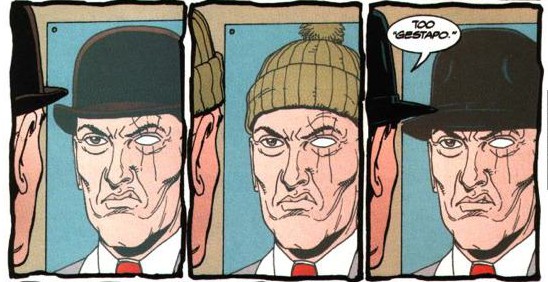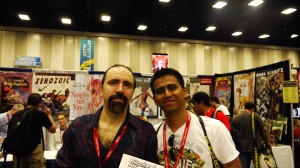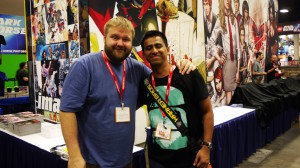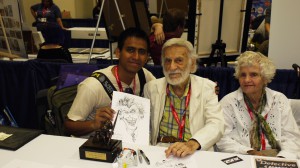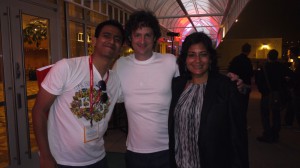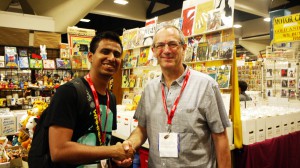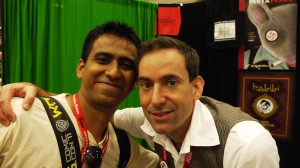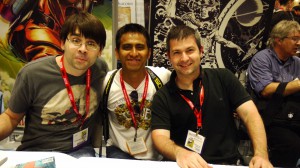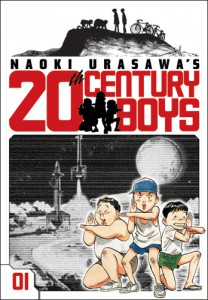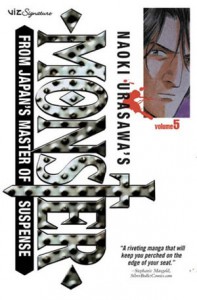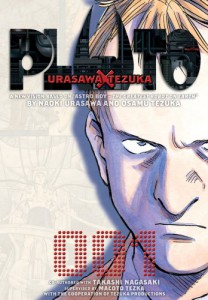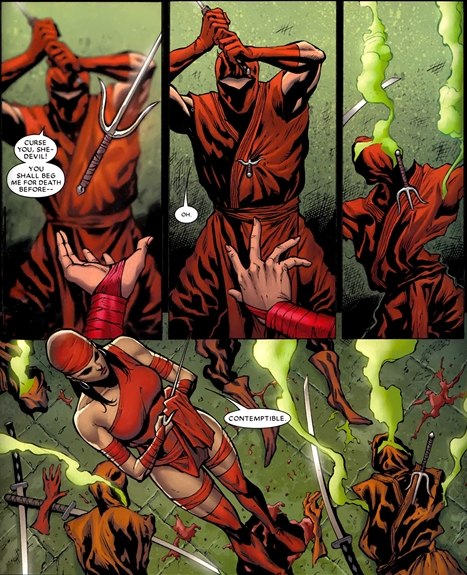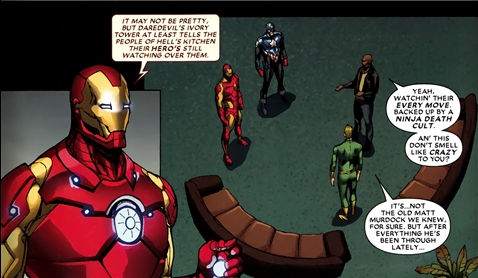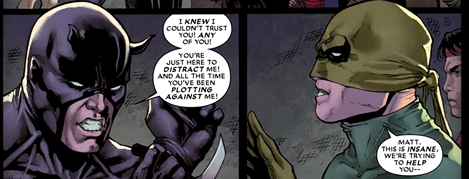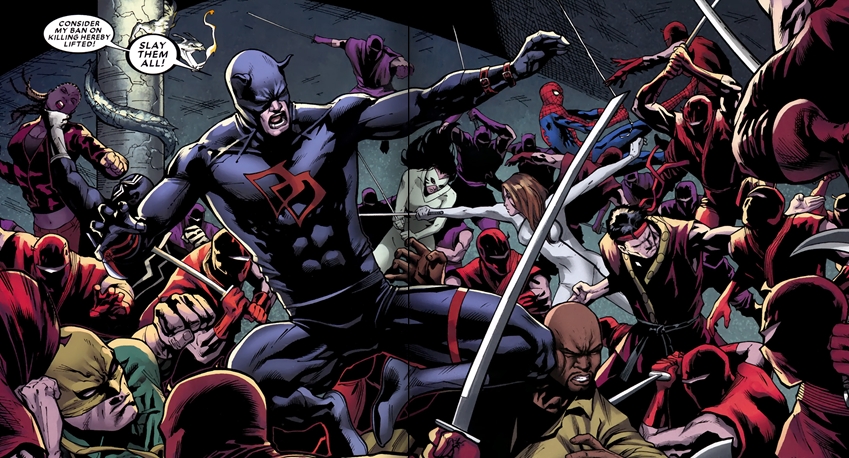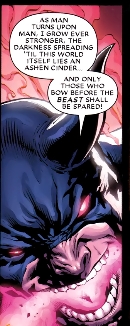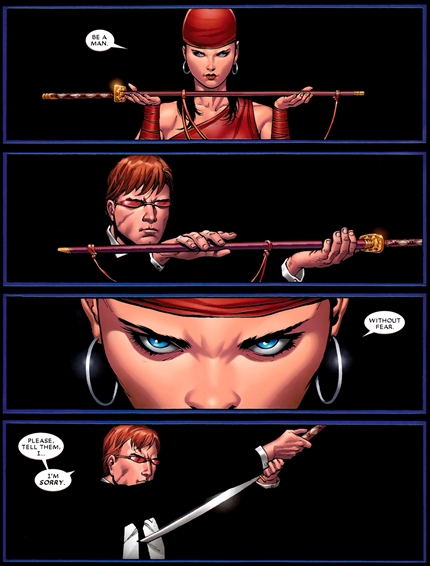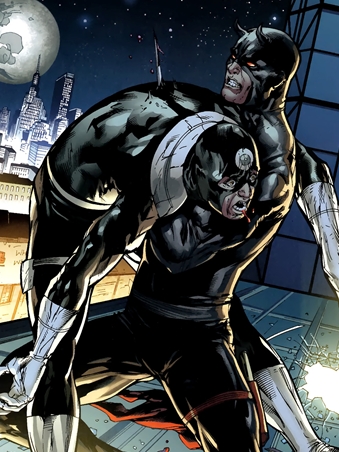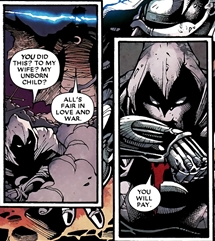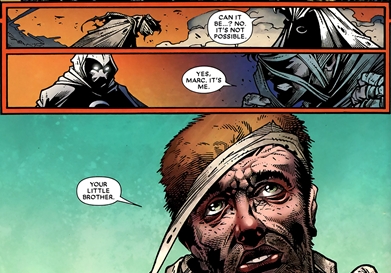In which I flog my face, in the company of illustrious embellishers. Based on an idea submitted by Ganesh Natarajan, age 26, Chennai.
Meeting Adam Warren was high on my priority list for the con. His Empowered happens to be the one of the few comics that I wish had a speedier release schedule, and I have gone on record stating how much of a crush I have on the titular super-heroine. One of my fondest wishes is to own a complete Emp story – Adam does 2-3 page stories often in his books, and they are funny, sexy and perfect self-contained chunks of his artistry.
I spent the better part of a day looking for his booth, and following his tweets regarding his whereabouts. On the second day of the con, I landed up at Stuart Ng books because they had his sketchbooks, and as soon as I saw them on display, I grabbed at one and was flipping through it. This guy asks me if he can take a look, and I oblige. As he flipped through it, I was on full Emp-love mode, talking about how cool the series is and how great the sketchbook looks, because it had some short stories in it. After some time, I notice a bunch of people clustered around us, and steal a glance at the guy’s name tag. *Groan* It was Adam Warren himself, looking through his sketchbook because they came straight to the con and he had not seen them before. Obviously, I met him again the next day, and bought some art, but I found it totally serendipitous to meet him this way.
I met Kirkman on Wednesday evening, when everybody was setting up. I was still in the “I can’t believe I am standing here” mode when my friend Kwan introduced me to Kirkman, and I shook hands and said hi. Kwan took a picture of us. And then as we were walking away, it sort of registered who I had just met – the guy that wrote the best ongoing series in comics, bar none. So I took a deep breath, turned and explained to Robert why I thought he was awesome and his books were awesome and that he should continue the awesomeness and take my money forever. He did not freak out and run away, so I assume I was lucid when I said all that.
It was such an honor to meet one of the figures who shaped the Golden Age. Mr Robinson was signing at his own booth, and I happened to be there at the right time. Picked up one of his prints, had him sign it to me, and when I asked to take a photograph, he called me behind the booth so that I was in the picture as well.
Picture taken at the end of the party. I had seven glasses of wine in me, and was very freaking happy with the evening’s proceedings. There was a Bone photo-booth, and the original plan was to go in there with Jeff and Vijaya and pose with Bone. But the booth was closed towards the end, so we just decided to take the picture on my camera.
Then I staggered to my hotel room (2 miles away!), collapsed on my bed, and felt the world heave and shudder all night. Seven glasses of wine, I hate you (like I love you).
If Dave Gibbons looks a little flustered here, it’s because he was in a hurry. I sort of feel sorry about my friend Joe stopping him just so I could get a picture taken with him, but Dave was nice enough to oblige. Later on, Dave was on stage with Jonathan Ross, as part of the Eisner presenters and the duo killed everyone with their jokes.
In 2007, I nearly paid a European collector $350 to get a small sketch by Craig that he owned. Wise sense (and a nearly-empty wallet) prevailed, and I did not go ahead with the deal. It was therefore a happy moment at the Con when I got to meet Craig, chatted with him about his work – he mentioned that he almost made it to the Jaipur Lit festival this year, but had to pull out at the last moment. Even meeting him was fortuitous. I was looking for the Harper-Collins booth to see if Joe Hill was hanging out there, and when passingthe Pantheon booth, I nearly fainted (mostly because I could not believe that I had missed this crucial bit of information) on seeing a hardcover edition of Habibi, Thompson’s 700+ page work after Blankets. As it turned out, the book would be out in September, and all I could do at the moment was hold it, caress it and kiss it goodbye-till-we-meet-again. The lady at the booth informed us that Craig would be signing posters at the booth for an hour the next day. Of course I made sure I was there an hour before the designated time, saw that a line had already formed before me. I bought a Blankets hardcover, and when it was my turn, Craig graciously drew a sketch for me. It was, ladies and gentlemen, the cause of the shit-eating grin I had on me the rest of the day.
Ah, Joe Hill. The man who Made Me Believe. The first writer, after my childhood idol (who was his father) that I would buy anything by. It’s almost funny to think that I had postponed reading Locke And Key so long just because I thought it would not live up to his prose writing. I was wrong. Joe Hill is a genius, and lucky, because he teamed with artist Gabriel Rodriguez, whose work has to be seen to be believed. Do not read anything about Locke and Key on the web, just go and download it RIGHT NOW. Read it. If you are not compelled to pay these guys money once you’re done, maybe you should stop reading this blog, because seriously, I do not have anything in common with you. Yes, them’s fighting words, but you’ve got to understand, I’ve waited years to be this blown away by a comic-book series. To not be jaded by a writer’s work because I can predict what’s coming next. *
*with the exception of The Walking Dead.
